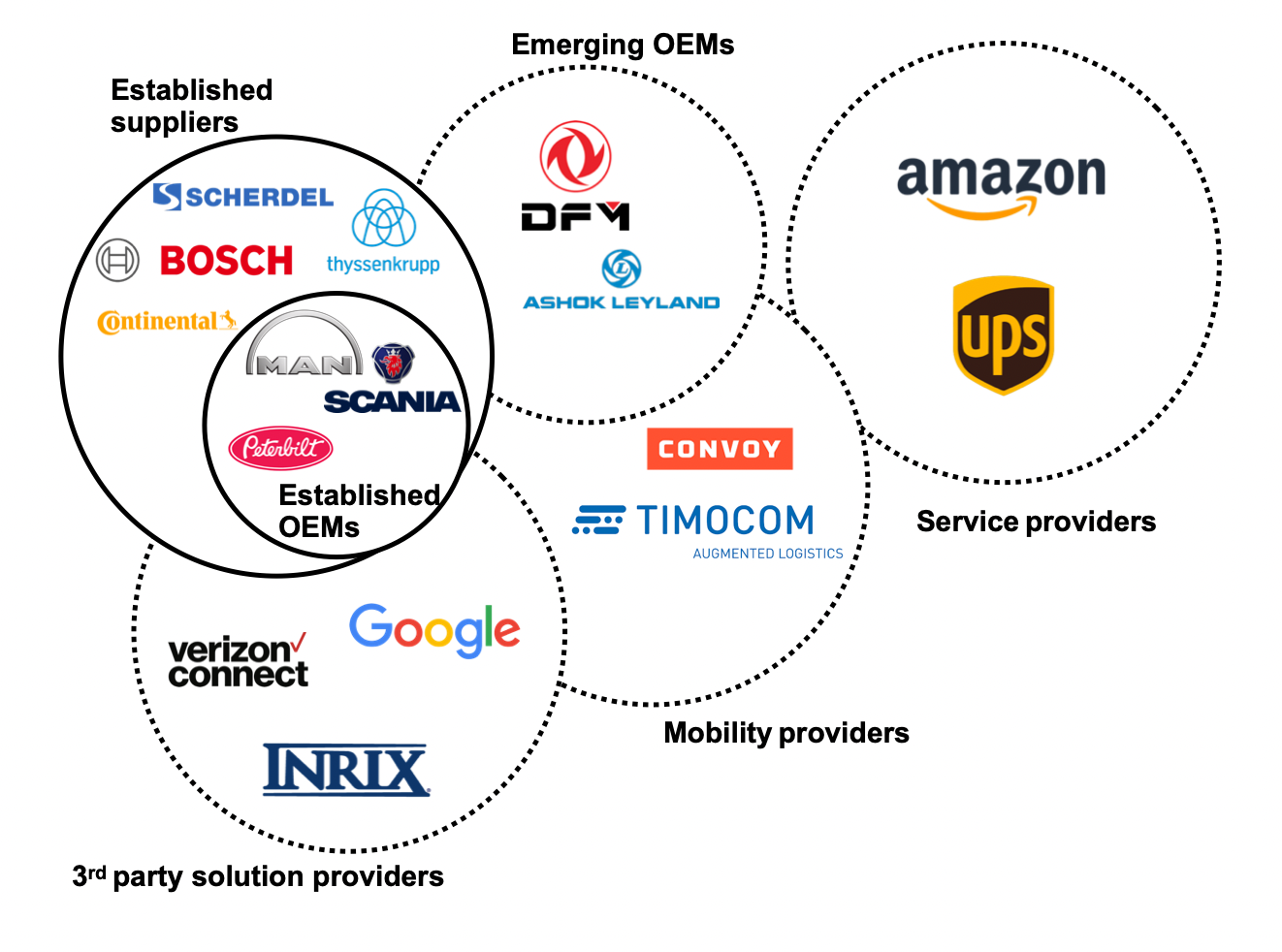
CV Business Models: Cooperations & OEMs
| Tags | Business ModelCargoOEMsStreetTrucks |
|---|---|
| Publication Date |
For these innovations, as well as expansions across the market landscape, cooperations within and across groups are key [1]. Cooperations such as these would entail large incumbent OEMs to partner with innovative newcomers to harness new technologies and expert know-how, most commonly in the areas of IT and telecommunications [2]. Further, because barriers of entry to the CV industry are so high (high costs for infrastructure, highly competitive landscape, high costs of production, etc.), newcomers are dependent on cooperations with large incumbents in order to even survive the beginning stages of their business lifecycle. The resulting synergy would entail newcomers and startups to profit from existing and efficient infrastructure for production, as well as a solid market share and experience [1]. In return, OEMs make up for the lack in niche technological knowledge and expertise that the highly specialized startups and other previously unrelated emerging firms can offer, which would have previously not been possible with limited R&D capabilities of OEMs. The below diagram showcases how the industry landscape could look like by the year 2030, with the multitude of new players from various industries and backgrounds overlap with existing and emerging OEMs in synergy.
In previous years, new players in the CV game have emerged and are positioning themselves in future growth areas which are competitively advantageous [1][2]. Some of these players include Nikola Motors, which specialize in developing heavy-duty electric and hydrogen fuel cell trucks, Xos (formerly known as Thor Trucks), a startup planning to develop heavy-duty electric trucks, and BYD, which is developing different prototypes to tackle cooling trucks and off-highway solutions [1]. Some better-known names, such as Tesla, are also positioning themselves in the CV industry; Tesla-Semi is set out to develop electric and autonomous trucks which promise Level 3 capabilities to be included in every truck [2].

Sources
[1] Renschler, A. (2020). The commercial vehicle industry at a glance. Munich.
[2] Jentzsch, A., Janda, J., Xu, G., Wiedenhoff, P., Girisch, A. (2019). The Future of Commercial Vehicles — How New Technologies Are Transforming The Industry. The Boston Consulting Group.